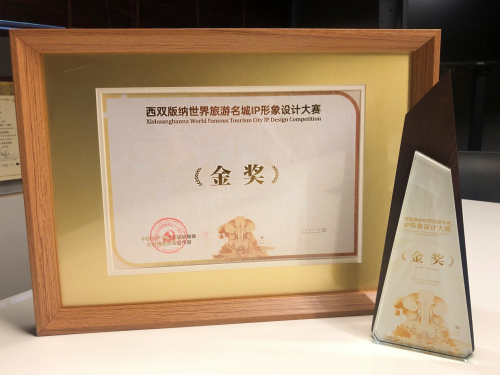脑部磁共振成像丨Companion Animal
Imaging the brain with MRI
 【资料图】
【资料图】
原文
https://www.ivis.org/system/files/google_drive/node/64586/field_chpt_content/eyJzdWJkaXIiOiJcL25vZGVcLzY0NTg2XC9maWVsZF9jaHB0X2NvbnRlbnQifQ--pOLptwzcuUIL_wzQJwxyVkwnpyKbVy3rks59eruP4Oo.pdf
The increasing use of MRI in veterinary patients over the last 25 years has meanta dramatic increase in the ability to diagnose and therefore treat many diseases,especially those affecting the central nervous system. Initially, veterinary patientswere scanned at medical or research facilities (unusually at unsocial hours), then a fewveterinary institutions installed mostly mid- and high-field scanners and more recentlylow field systems designed for the veterinary market have become popular. Nowmost referral facilities and many first opinion practices either have their own scanneror ready access to one via mobile MR scanners in large lorries. The rapid expansionof teleradiology services has also meant that images acquired can be interpreted byexperts even when the user is an MRI novice.
在过去的25年里,越来越多的兽医病患使用核磁共振成像,这意味着诊断和治疗许多疾病的能力大大提高,特别是那些影响中枢神经系统的疾病。最初,兽医病患在医疗或研究机构进行扫描(通常在非社交时间),然后一些兽医机构大多安装了中高场扫描仪,最近为兽医市场设计的低场系统已经流行起来。现在,大多数转诊机构和许多第一意见诊所要么有自己的扫描仪,要么通过大型卡车上的移动磁共振扫描仪,随时可以使用。远程放射学服务的迅速扩展也意味着,即使用户是核磁共振成像的新手,获得的图像也可以由专家进行判读解释。
This lecture will address MRI of the brain in veterinary patients, considering thetechnique and approach to interpretation. It is based on 24 years of experience withon-site MRI at the AHT, since 2000 with a 1.5 Tesla magnet.
本讲座将讨论兽医病患的脑部核磁共振成像,并考虑其判读的技术和方法。它是基于AHT 24年的现场核磁共振经验,自2000年以来,使用的是1.5特斯拉的磁共振设备。
High field versus low field magnets 高场强 vs 低场强磁共振
High field, superconducting magnets (1.5T and above: 3T are being installed in someveterinary institutions) have a number of advantages including shorter scan times,better image quality and the ability to perform certain types of scan such as spectral fatsuppression and diffusion weighted imaging. Disadvantages include their much highercost, major housing requirements and closed bore. Low field, permanent magnets wereoriginally designed for use in claustrophobic human patients and for interventionalMRI but have become popular in veterinary imaging as they are cheaper to purchaseand can be installed in a smaller area. However, imaging times are much longer, imagequality is often poorer (especially of T2-weighted scans) and types of study can belimited. Nevertheless, the manufacturers are constantly developing new sequences totry to overcome some of these limitations.
高场超导磁体(1.5T及以上:一些兽医机构正在安装3T的)具有许多优点,包括更短的扫描时间,更好的图像质量以及执行某些类型扫描的能力,如质谱脂肪抑制和弥散加权成像。缺点包括成本高得多,主要的外壳要求和封闭孔。低场永磁体最初是为幽闭恐惧症病患和介入性核磁共振设计的,但由于它们购买更便宜,可以安装在更小的区域,因此在兽医成像中很受欢迎。然而,成像时间要长得多,图像质量通常较差(特别是T2加权扫描),并且研究类型可能受到限制。尽管如此,制造商仍在不断开发新的序列,试图克服这些限制。
Patient restraint and positioning
病患保定和摆位
The relatively long scanning time required means that general anaesthesia is usuallyessential. Due to the powerful magnetic field around high field scanners the equipmentused must be non-ferrous and MRI compatible. Suitable anaesthetic and monitoringequipment is available in the medical market, but is expensive. With low field systemsit is usually possible to use conventional equipment but with long circuits so that anynon-MRI-compatible equipment is safely outside the stray magnetic field. Shorter scans(such as ‘mini-scans’ for Chiari/syringomyelia screening) are sometimes performedunder heavy sedation and on occasion it may be possible to scan comatose patientswith no further chemical restraint. Image quality may be poorer but in such cases largelesions are likely to be present.
扫描所需的时间相对较长,这意味着通常需要全身麻醉。由于高场扫描仪周围的强大磁场,所使用的设备必须是非铁金属和MRI兼容的。医疗市场上有合适的麻醉和监测设备,但价格昂贵。对于低磁场系统,通常可以使用传统的设备,但要使用长线路,这样任何不兼容核磁共振成像的设备都可以安全地置于杂散磁场之外。较短的扫描(如筛查脊髓空洞的“迷你扫描”)有时可以在重度镇静下进行,有时可能在没有进一步化学保定的情况下扫描昏迷的病患。图像质量可能较差,但在这种情况下,可能存在较大的病变。
The recumbency of the patient depends on the shape of the RF coil and in some caseson the animal’s conformation or certain medical issues. Many patients are scanned indorsal recumbency, which allows for easy positioning, but ventral recumbency canalso be used and is advised in patients where there may be a risk of regurgitation.Positioning in lateral recumbency is often more difficult but can be helpful for verynarrow dogs which are hard to restrain supine or prone, and for comatose patients.Positioning aids and restraint bands are helpful.
病患的躺姿取决于射频线圈的形状,在某些情况下取决于动物的构造或某些医疗疾病问题。许多病患采用背卧位扫描,这便于定位,但也可以采用腹卧位,并建议有食道反流风险的病患采用腹卧位。侧卧位通常更困难,但对于很难仰卧保定或俯卧的非常扁的狗狗和昏迷病患来说是有帮助的。摆位辅助工具和保定带是有用的。
Choice of radiofrequency (RF) coil
射频线圈的选择
Medical MRI scanners come with a range of shapes and sizes of RF coils which aredesigned for use in people but which are equally suitable for small animals. Images areoptimum when the area to be scanned fills the coil fairly well: images will be poor if thehead is much smaller than the RF coil. The usual RF coil for examination of the head isa human extremity coil but for large and giant dogs a human head coil is required. It isalso possible to obtain excellent brain scans using a surface spine coil with the dog indorsal recumbency, as the brain is close to the coil surface. Veterinary MR scanners havetheir own purpose-designed RF coils.
医学核磁共振扫描仪有一系列形状和大小的射频线圈,这些线圈是为人类设计的,但同样适用于小动物。当要扫描的区域相当好地填充线圈时,图像是最佳的;如果头部比射频线圈小得多,图像就会很差。通常用于检查头部的射频线圈是人的肢体线圈,但对于大型和巨型犬需要人的头部线圈。使用表面脊柱线圈,犬背部平躺,也可以获得出色的脑部扫描,因为大脑靠近线圈表面。兽医磁共振扫描仪有自己专门设计的射频线圈。
Image planes and pulse sequences
成像平面和脉冲序列
Standard image planes for the brain are dorsal, transverse and sagittal. Each isimportant for different parts of the brain and all three planes should usually be used ineach patient. Oblique planes are helpful for the optic nerve and orbit.
脑的标准图像平面为背侧面、横断面和矢状面。每个平面对大脑的不同部位都很重要,通常每个病患都应该使用这三个平面。斜面对视神经和眼眶有帮助。
A number of different pulse sequences should be used in order to obtain the maximuminformation about the nature of a brain lesion. The exceptions may be when majorpathology such as severe hydrocephalus or a large mass is evident and no treatmentis proposed: these will be evident on the three plane localiser. Standard sequencesinclude T1-weighting (T1W) and T2W: intermediate proton density weighting (PDW)can produce anatomically pleasing images but does not add further information.T1W is performed before and after intravenous injection of an MRI contrast medium,and most veterinary brain scans are not complete without a post-contrast T1W study.Following administration of contrast medium subtraction images can also be created,and for structures close to bone marrow, fat suppressed post-contrast T1W images arehelpful. Fluid-suppressed inversion recovery (FLAIR) is a standard sequence for the brainas high signal from normal CSF is suppressed and pathology close to the ventriclesor subarachnoid space will be better seen. A T2* gradient echo sequence is the mostsensitive way to detect haemorrhage with high field magnets but is less sensitive in lowfield systems. A variety of 3D gradient echo sequences can also be used. With high fieldsystems diffusion weighted imaging (DWI), perfusion imaging, diffusion tensor imagingand spectroscopy may be possible although clinical applications are currently limited.
为了获得关于脑损伤性质的最大信息,应该使用许多不同的脉冲序列。例外情况可能是当严重脑积水或大肿块等主要病理明显且未建议治疗时:这些在三平面定位仪上很明显。标准序列包括T1加权(T1W)和T2W:中间质子密度加权(PDW)可以产生解剖学上令人愉悦的图像,但不能增加进一步的信息。T1W是在静脉注射MRI增强剂之前和之后进行的,大多数兽医脑部扫描如果没有增强剂后的T1W研究是不完整的。在使用增强剂后,还可以创建减影图像,对于靠近骨髓的结构,脂肪抑制的增强后T1W图像是有帮助的。由于来自正常脑脊液的高信号被抑制,靠近脑室或蛛网膜下腔的病变将被更好地看到,因此液体抑制反转恢复(FLAIR)是脑的标准序列。T2*梯度回波序列是高场磁体检测出血最敏感的方法,但在低场系统中不太敏感。还可以使用各种3D梯度回声序列。尽管目前临床应用有限,但高场强系统的弥散加权成像(DWI)、灌注成像、弥散张量成像和质谱正逐渐成为可能。
Principles of interpretation
判读原则
A sound knowledge of MRI neuroanatomy and the ability to correlate visibleabnormalities with clinical signs is necessary. A number of atlases and electronicfacilities are available for normal brain MRI. There is a wide variation in the appearanceof the brain with breed and head conformation, even within specific breeds and it isessential not to over-diagnose an incidental variant as pathology. Comparison of theright and left sides of the brain on dorsal and transverse images is very important,although it must be appreciated that slight asymmetry can be a normal finding,especially of lateral ventricle size. A number of important but incidental variants will bedemonstrated in the lecture.If lesions are detected they should be described using general principles as below, andexamples will be shown:
具备MRI神经解剖学的良好知识和将可见异常与临床症状相关联的能力是必要的。正常的脑MRI有一些图谱和电子设备软件。随着品种和头部形态的不同,大脑的外观也有很大的变化,即使是在特定的品种中,也不能把偶然的变异过度诊断为病理。虽然必须认识到轻微的不对称可能是正常的发现,特别是侧脑室的大小,但在背侧面和横断面上比较左右脑是非常重要的。一些重要但偶然的变异将在讲座中展示。如果检测到病变,应使用以下一般原则进行描述,并将展示示例:
Number: solitary, multiple, diffuse
Distribution when multiple lesions are seen: e.g. unilateral or bilateral, symmetrical orasymmetrical
Location: extra-axial, intra-axial, intra-ventricular, pituitary: white matter, grey matter orboth: then a more precise description of the location e.g. cerebral, cerebellar, brainstem
Size: mm size in three orthogonal planes
Shape and margination: e.g. rounded, irregular etc.; well-defined, ill-defined, semidefined.
Associated oedema: absent, minimal, mild, marked, severe etc.
Mass effect: midline shift, ventricular distortion, herniation (sub-falcial, subtentorial,through foramen magnum, though craniectomy), secondary cervical cord changes
Signal characteristics on difference RF pulse sequences: hyperintense, hypointense,isointense (and iso to what), signal void: suppressing
Contrast enhancement degree and pattern: e.g. mild/moderate, marked; homogeneous,heterogeneous, ring/rim enhancement
Other features: e.g. haemorrhage, cyst formation, cavitation, extra-cranial changes
Change over time, if sequential studies are performed.
Following a full description of the lesion a list of differential diagnoses is possible whichpermits planning for further tests if indicated.
数量:单个,多个,弥散
多发病变时分布:如单侧或双侧,对称或不对称
位置:轴外、轴内、脑室内、垂体:白质、灰质或两者兼而有之:然后是更精确的位置描述,如大脑、小脑、脑干
大小:三个正交平面的毫米大小
形状及边缘:如圆形、不规则等;边界清晰的,不清晰的,半清晰的。
相关水肿:无水肿、轻微水肿、轻度水肿、明显水肿、严重水肿等。
肿物效应:中线移位,脑室变形,疝出(镰下,幕下,通过枕骨大孔,经颅骨切除术),继发颈髓改变
不同射频脉冲序列的信号特征:高强度、低强度、等强度(和相对什么等强度),信号空洞:抑制
对比增强程度和模式:如轻度/中度,明显;均质,非均质,环形/边缘增强
其他特征:如出血、囊肿形成、空腔、颅外改变
如果进行了系列研究,病变随时间的变化。
在病变的完整描述之后,可以列出鉴别诊断列表,以便在需要时计划进一步的检查。
END
标签:











